Heritage for the Nation.
Magical Elf and Safety
Recently the Treasure Trove Unit had the pleasure of researching and claiming a very intriguing pendant (COTT 132/22). It is a frame and backplate of silver gilt decorative metalwork around a Bronze Age barbed and tanged flint arrowhead. The back of the frame is engraved with the initials I K(or perhaps R) and C S with a small floral embellishment below. The pendant dates to the Post-Medieval period, but the flint is much older, dating to the Early Bronze Age. It was found by a detectorist in Moray and was allocated to Elgin Museum in 2022.
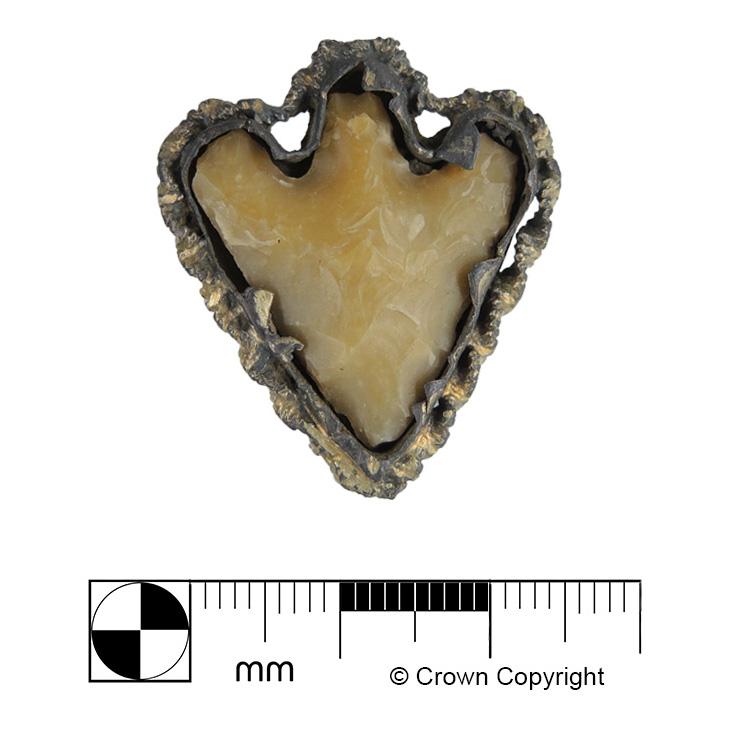
Composite items like this appear to be examples of Scottish folk apotropaic magic (averting bad luck or evil; in this case, warding off elf/fairy mischief), as well as wholly personal artefacts like heirlooms or mementos, as examples with engraved initials (like this one) would suggest.
This pendant offers us a glimpse into the historical re-use of artefacts from prehistory, and how and why people used them. It is one of a number of artefacts known from Scotland that are described as ‘elf shot amulets/charms’. They are usually stone arrowheads set into a precious metal frame, transforming them into wearable personal adornments, mementos or keepsakes.
The arrowheads were traditionally believed to have been shot by mischievous fairies or elves in order to harm cattle; a major source of sustenance in the early modern era, particularly for those in rural areas. The supposed ‘cure’ for cattle was to touch them with the arrow that had hit them, or to have them drink water in which the arrow had been soaked. It seems that beliefs around these elf shots also encouraged collecting them for use as cures.
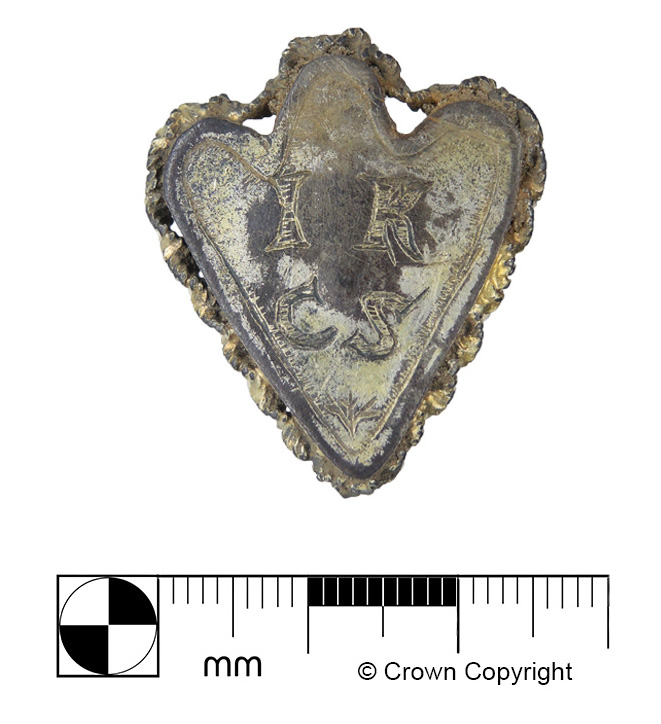
Part of the silver plate in the centre of the reverse of COTT 132/22 has tarnished and is now a dark, dull grey in colour, suggesting that the pendant was continually touched or rubbed in this spot, perhaps for luck.
Follow these links to see further information on similar charms in National Museums Scotland collections.
Pendant of barbed and tanged, honey coloured flint arrowhead mounted in a silver open fronted frame, the silver back engraved with leaves and strap-work. NMS collections. H.NF 42
Charm of a leaf-shaped flint arrowhead set in an oval crystal container with suspension loop bound with gold. H.NO 75
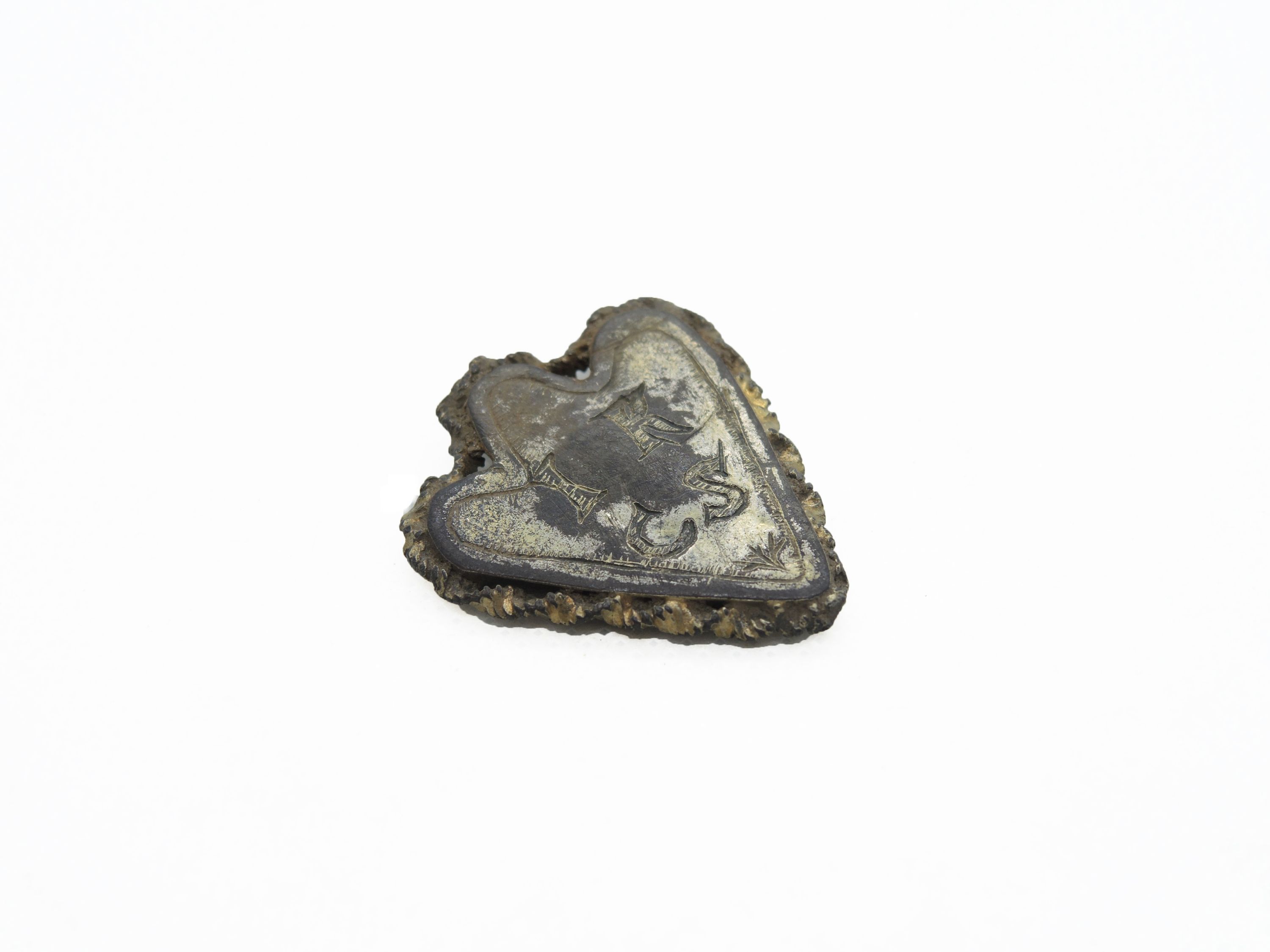
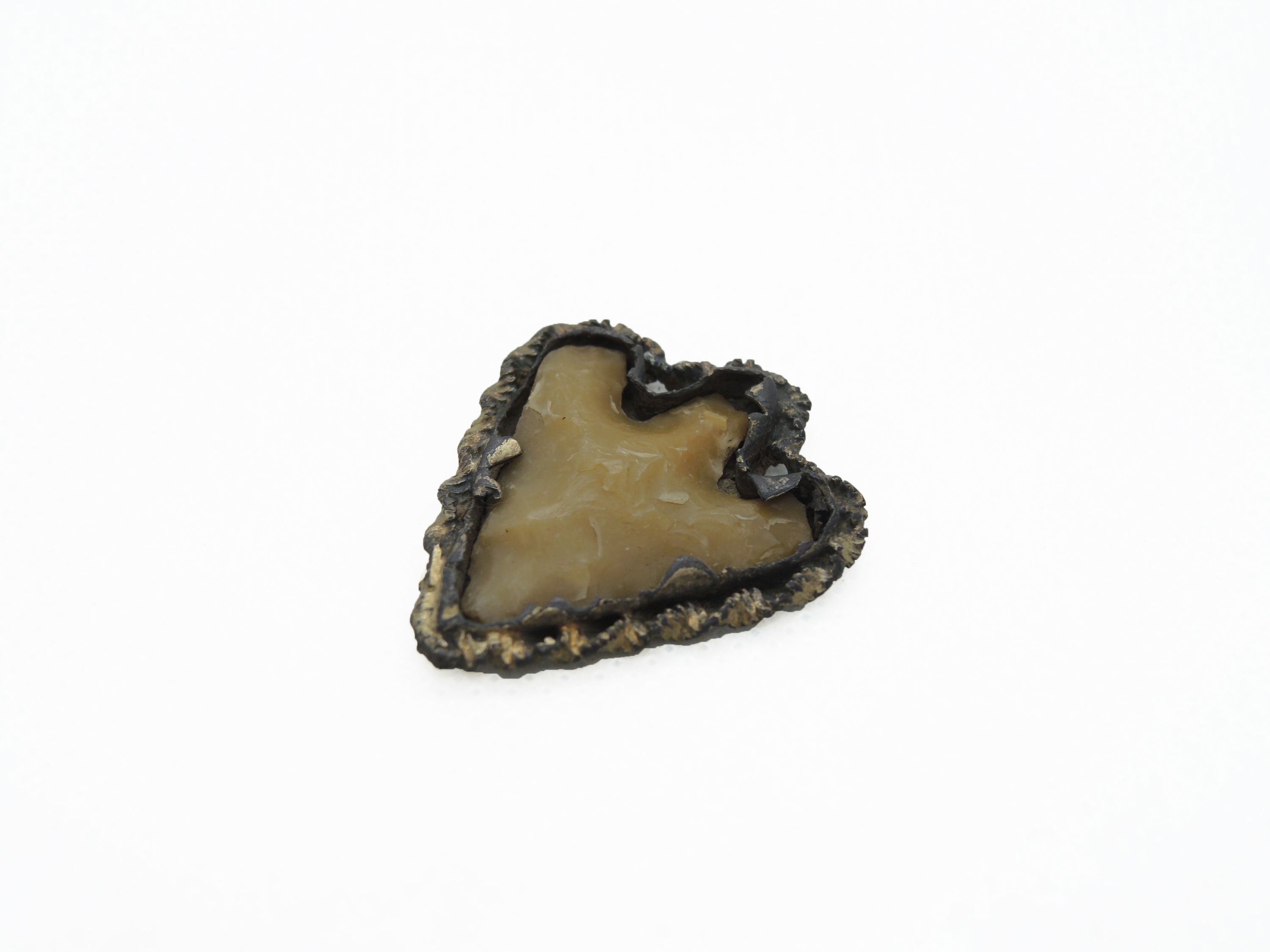
It wasn’t only knapped flint that was used in this way. Other natural items, like ‘toadstones’ (which were actually the fossilised teeth of the fish Lepidotes) were also revered for their curative powers and apparent ability to alert the bearer to the presence of poison. They too were often placed in charms, finger rings and keepsakes. Toadstones were so special that other materials were often used to replicate the look of them.
Follow this link to see a toadstone charm (actually a glass marble) in the Hunterian Museum Collections
'Toadstone' Charm (Hunterian Museum)
Hunterian Museum Collections. Found in Renfrewshire and dating between AD 1600 AND 1813. GLAHM:C.103
Such repurposing of archaeological and natural specimens in this way became popular in the late 17th century. This date is in keeping with the stylistic design seen in COTT 132/22. However, other examples exist with a suggested later date, such as a gold-set arrowhead pendant from NMS collections (acc. no. HNO 76 - see in links above) which likely dates to the 19th century. Indeed, folk fascination with ‘elf shot’ and ‘elf bolts’, as well as many other personal decorative charms, was rekindled during the Victorian era and continues to have profound influence on how we express ourselves through our own contemporary artefacts today. Many of us have special items of jewellery or tokens of good luck that we wear or keep with us. Perhaps it would be useful over this cold festive period to practice a little of our own magical 'elf' and safety and keep our good luck charms close to hand!
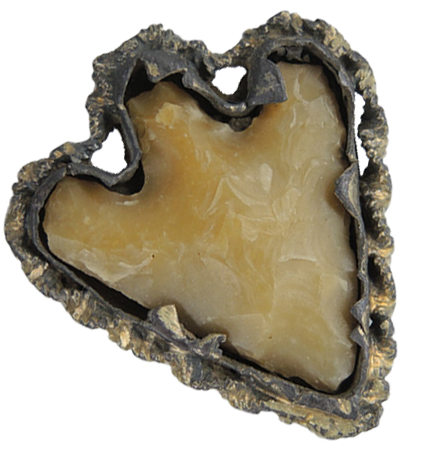
References
George Black: 'Scottish Charms and Amulets' from Proceedings of the Society for the Antiquities of Scotland, May 8, 1893
Robert Kirk. The Secret Commonwealth of Elves, Fauns, and Fairies. 1691. Reprint, London: D. Nutt, 1893.